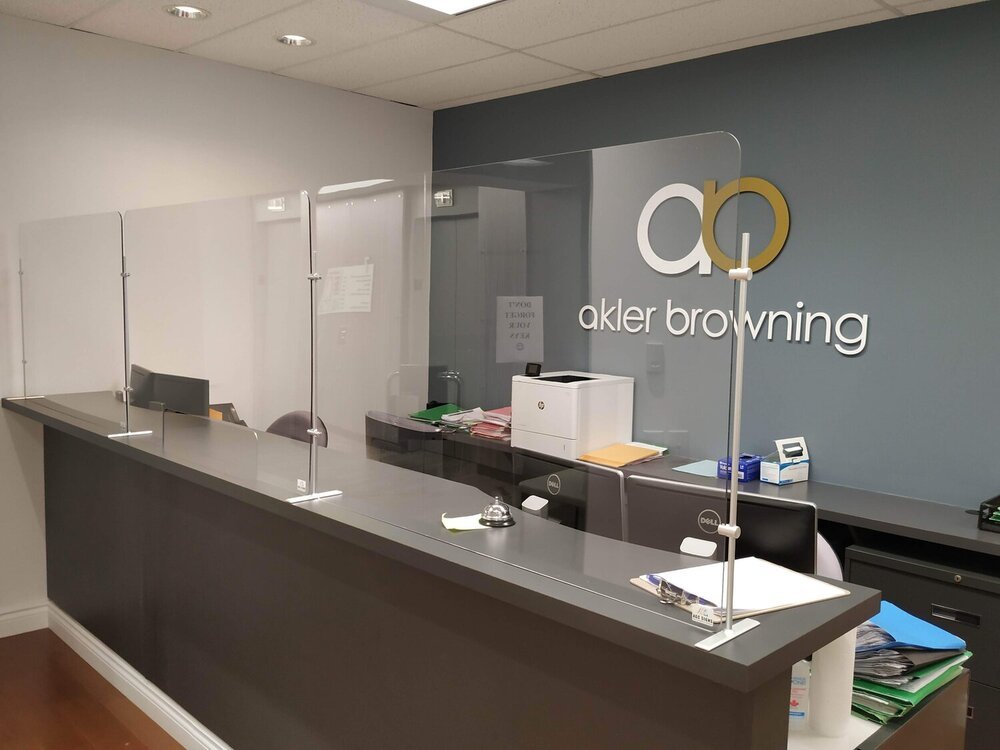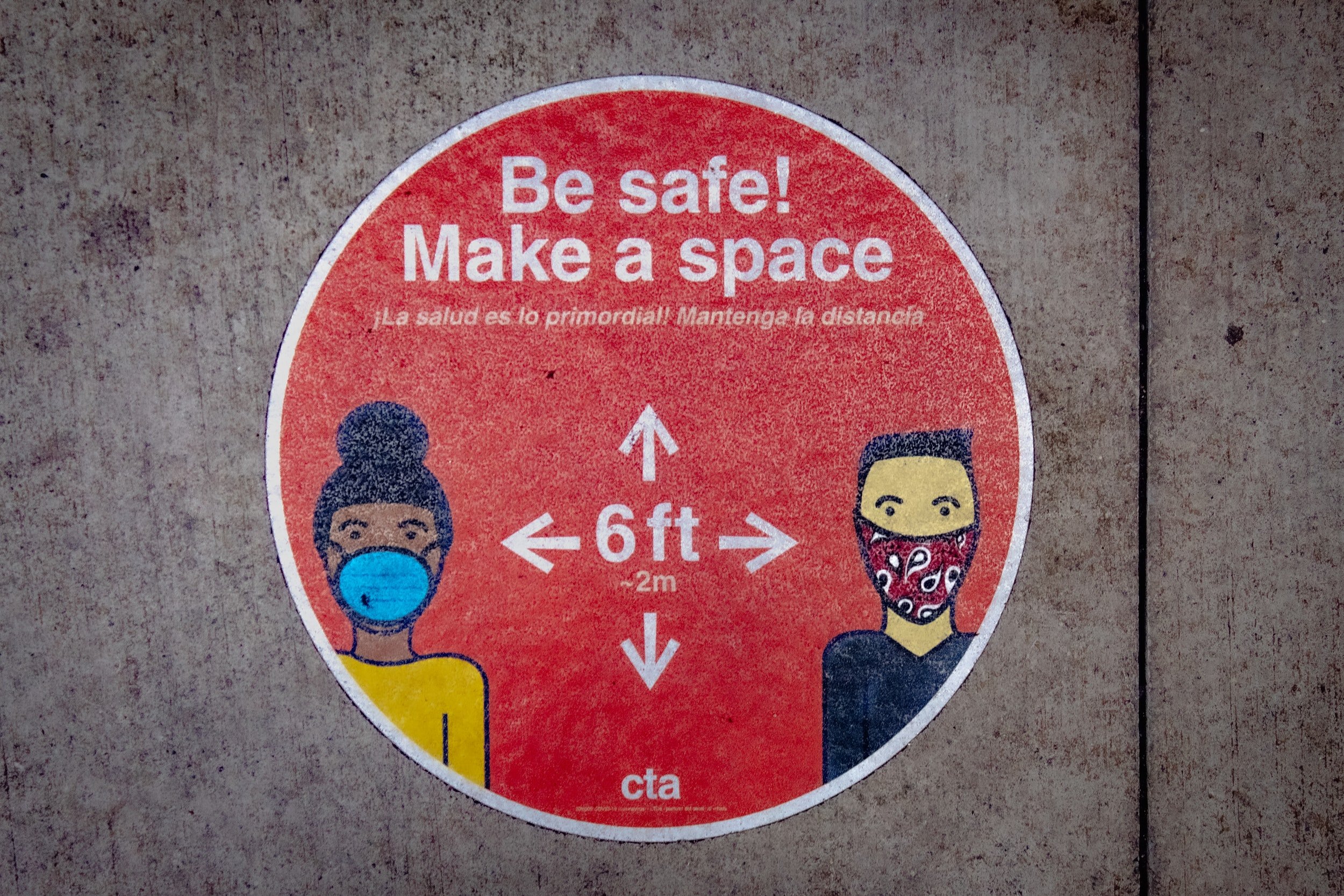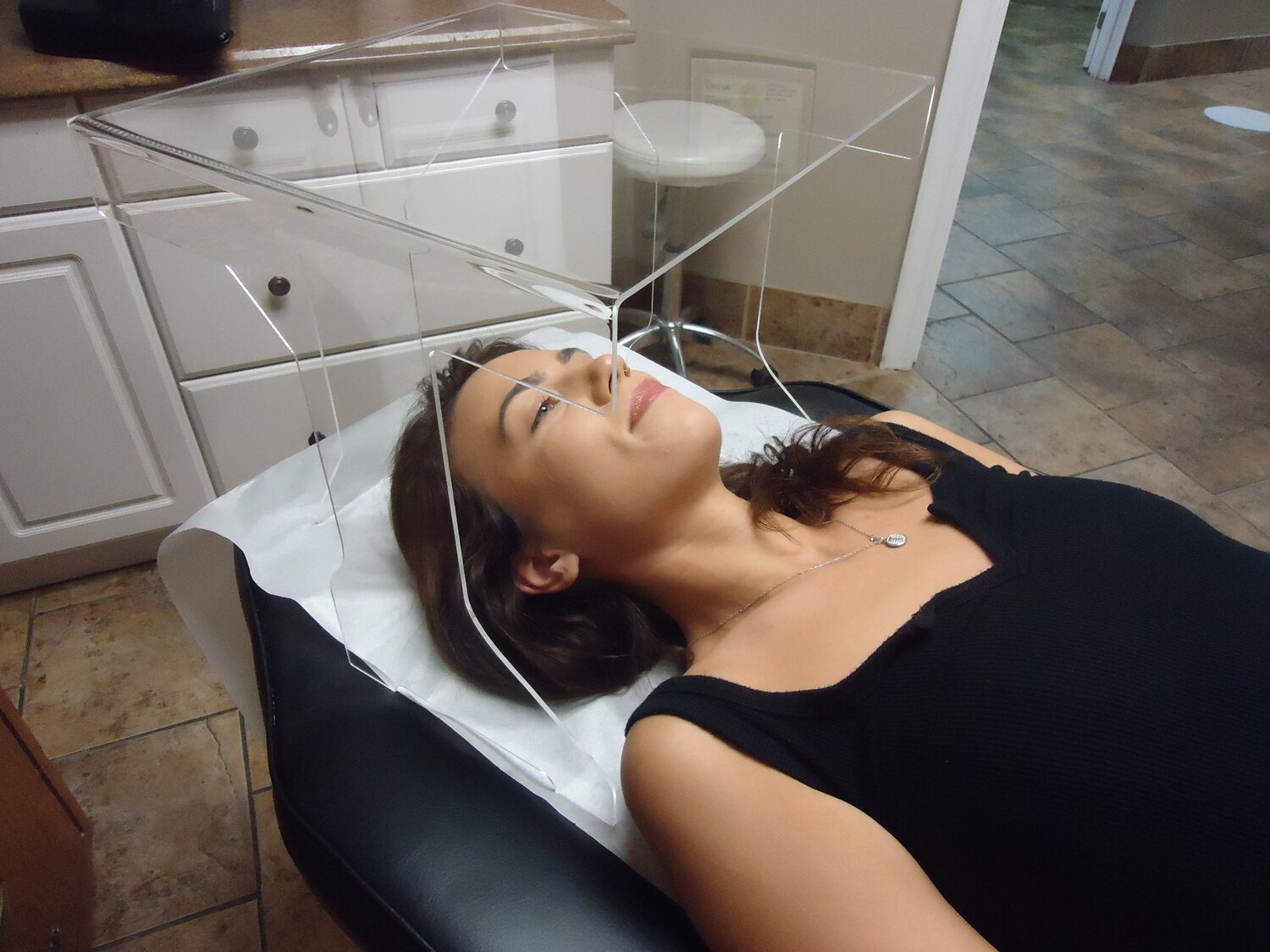Plexiglass barriers are the new norm for offices.
THE NEW NORMAL
In a post-Covid-19 world, many workplaces have evolved, incorporating safety procedures, barriers, and social distancing signs into everyday work. Some businesses have been able to continue with minimal changes, but many have installed a variety of different plexiglass barriers to aid in mitigating the spread of airborne illnesses like Covid-19.
If your business needs to replace outdated signage hardware or is looking to install safety signs for the first time, a local sign company like AGC Signs can walk you through the entire process. There are many different types of social distancing signs and barriers for all different purposes, such as:
Social distancing signs (wall-mounted or A-frame)
Office barriers
Sneeze guards (hanging or free-standing)
Face shields
To view our extensive galleries of many more styles and configurations, check out AGC’s official page for Plexiglass Barriers.
ARTICLE OVERVIEW
Social distancing signs and plexiglass barriers require maintenance and are easy to replace or modify. If you’re interested in changing or updating the signs in your workplace, this article will cover some of the options available, as well as quick maintenance tips, and official government guidelines regarding barriers.
Click the links below to go to that section:
For professional advice from a full-service sign company, contact AGC Signs for a free quote.
Whether you need social distancing signs, plexiglass barriers, or a sign for any other purpose, make your next move with AGC Signs.
Social Distancing Signs, Barriers, Guards, and More
Plexiglass Barriers - EXAMPLES
Social distancing signs using plexiglass are incredibly flexible and can be installed in almost any indoor environment in a huge array of different setups. Below are some examples of common ways that plexiglass barriers can be used in indoor public spaces.
BOARD ROOMS & LUNCH ROOMS
Tabletop barriers can have non-slip tracks so they don’t slide and scratch the table.
RECEPTION DESKS
Segmented panels can have different heights in order to fit on any desk.
RESTAURANTS
Plexiglass is used in restaurants to protect customers from one another and cashiers while working.
OFFICES
Barriers can be given long or short legs based on how tall they need to be.
SCHOOLS
Schools often use barriers with wheels on them so they can be easily stored or rearranged. It also never hurts to remind the kids what an acceptable social distance is. Colorful signs are a great choice.
SNEEZE GUARDS
Like barriers for cashiers, sneeze guards are useful for any job that involves a lot of customer interaction. They can even be hung from the ceiling.
OTHER
Plexiglass barriers can be manipulated to fit almost any environment, even spas or daycares.
Most sign shops that offer plexiglass and social distancing signs also offer robust plastic face masks.
If your workplace needs a more robust, durable sign, metal is a reliable choice.
Plexiglass Barriers - MAINTENANCE
Disinfectant is a must for any sign in a high-traffic area.
For general purposes, “plexiglass” is functionally equivalent to “acrylic.” This is helpful because it means that any cleaning process that works on acrylic will work on your plexiglass social distancing signs.
Unlike real glass, plexiglass scratches easily and a variety of cleaning solutions can damage or destroy it. In particular, you want to avoid cleaners containing “alcohol, ammonia, aromatics, and other abrasives,” as these ingredients can corrode, crack, or dissolve the plexiglass surface.
The two main issues you may have with your plexiglass barriers are:
Dirt & Grime
Cracks
CLEANING PLEXIGLASS
If dirty, you can follow a few easy steps to clean your plexiglass:
1 - Remove the dust and dirt by shaking or blowing the plexiglass.
2 - Rinse with a solution of dish soap and water (about 1 tsp soap mixed with 1 litre of water).
3 - Wipe with a microfiber cloth.
If cracked or deeply scratched, it’s possible to sand down uneven edges, but if your barrier has any major physical damage then you may want to consider replacing it.
Plexiglass Barriers - GUIDELINES
Local and provincial governments have guidelines on the best practices for Covid-19 safety.
Official guidelines regarding Covid-19 safety vary from region to region.
In Ontario, Canada, the enforced restrictions and orders are being lifted at the end of April. Despite this relaxation, many businesses may still want to continue standard safety measures to minimize the risk of infection spreading in their workplace.
In Toronto, the official guidelines for employers, businesses, and organizations include the following advisories:
Workplaces should be well ventilated.
Employees should wear masks and wash their hands regularly.
Frequently touched surfaces should be disinfected as necessary.
Staff should be educated on safe behaviour.
Consider making rapid tests available if there is ever a risk that someone was exposed to the virus.
“Consider plexiglass or other impermeable barriers, for high frequency, short duration interactions.”
Your own region may have different guidelines. When in doubt, err on the side of safety and cleanliness.
IF YOU NEED PLEXIGLASS BARRIERS OR ANY VARIETY OF SOCIAL DISTANCING SIGNS, AGC CAN HELP.
CONTACT AGC SIGNS FOR A FREE QUOTE AND THE MOST PROFESSIONAL SERVICE AROUND.
But don’t just take our word for it. Check out what customers have to say about AGC Signs:
“AGC did a wonderful job installing plexiglass barriers in our computer rooms. They were quick, had great customer service and were accurate. Highly recommend.”
“I have recently installed plexiglass barrier for my company. Excellent customer care service by Rhonda and Adrian. Very good prices and professional work in timely manner.”
“Both Adrian and Rhonda provided exceptional customer service in a timely manner while assisting us with placing our order for Plexiglas screens. We were delighted with the design and quality of their product which exceeded our expectations. AGC Signs comes highly recommend by the Durham Region Unemployed Help Centre.”




























